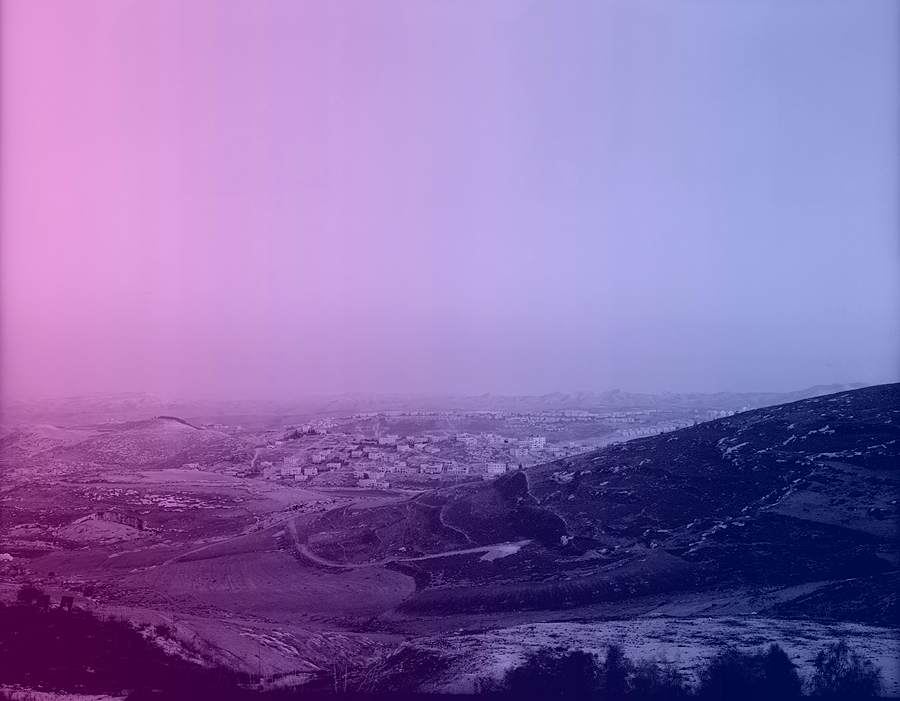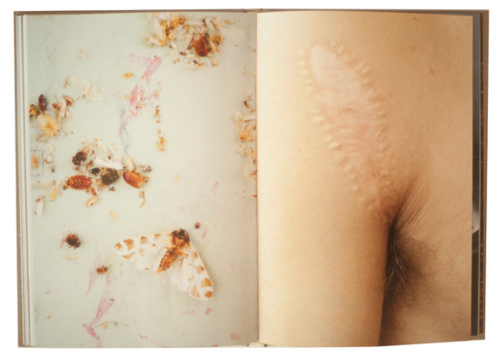Q&A: Jordan Rockford
By Rafael Soldi
Jordan Rockford is a curator, educator and creative collaborator. Curatorial projects include the first U.S. exhibitions of work by Cambodian artist Vuth Lyno and Israeli photographer David Adika in 2012 and 2013; creative development for Hidden City 2009, a city-wide festival of installation art based in historic sites; and exhibitions for the Delaware Art Museum and the William Way LGBT Community Center. Jordan is a design consultant for the City of Philadelphia Mural Arts Program and also a founding member of the Philadelphia-based artist-run project space NAPOLEON.
Rafael Soldi: Hi Jordan!
Jordan Rockford: Hey there, Rafael! Thanks for inviting me.
RS: What's your story?
JR: I was just talking with my students yesterday about the cultural compulsion to make photographs – how long before the era of selfies and social media, long before some of us even knew we might become photographers, we nevertheless made awful, blurry photos of our friends goofing off in grade school classrooms. These weren’t intentionally documentary, I don’t think, but rather a ritual of participation, more about the photographic act than the about the photos themselves.
Conversely, a ten-year pursuit of a photographic education left me more interested in other people’s photos than in making my own. My early career in museums and archives, working with manuscript and photographic collections on both sides of the Atlantic, turned me on to curatorial practice and led eventually back to art and academia. Now I feel I’m in a position that really synthesizes my interests and experience: as a curator and writer, I feel that I collaborate with artists, in a sense, to articulate the ideas behind their work; as an educator, I aim to give students a foundation on which to build fluency in talking and thinking about art.
I was recently watching an episode of Art21 in which David Altmejd talks about how his love of languages led him to art, which he considers a language in itself. I love this, and yet I also still love the significance of language in shaping our understanding of the role art plays in our lives.
Oh, and I sometimes also still make work – most recently, and perhaps somewhat unexpectedly, a sound piece, which I collaborated on with British musician Scanner, that was exhibited alongside work by my NAPOLEON colleagues in the Traction Company show at the Pennsylvania Academy of the Fine Arts.
RS: Tell me about David Adika, and your subsequent visit to Tel Aviv. How was that experience and what came of it?
JR: The University of the Arts has a long-standing partnership with Equality Forum, a national and international LGBT civil rights organization, to present an exhibition during their annual forum. In 2013 I took the lead in curating this exhibition, with a forum focus on Israel. The Israeli delegation to the forum included a really savvy activist and queer community organizer named Anat Nir, who recommended photographer David Adika for the exhibition. I took one look at his work and was convinced. This was the beginning of a very productive professional relationship and lasting friendship between David, Anat and myself, as well as my introduction to working with the Israeli Consulate in Philadelphia.
Consequently, I was invited to Israel as a curatorial delegate in the International Program for the Fresh Paint Contemporary Art Fair in Tel Aviv. This was a truly amazing opportunity – the art fair and the Ministry of Foreign Affairs provided an extremely in-depth experience for a delegation of circa 25 curators from across the globe. It almost felt like we saw every art space in the state of Israel! It was during this visit that I met Gustavo Sagorsky, a colleague of David’s in the Photography program at Bezalel Academy of Arts and Design. Gustavo and I only spent maybe an hour together in that initial meeting, but bonded over his work pretty quickly. We maintained a correspondence, exploring ways to collaborate, until last spring when I saw an opportunity to exhibit his work at the University of the Arts while he was on a fellowship in the US. At around the same time his new monograph was accepted by Skinnerboox, an Italian art publisher, and Gustavo commissioned me to write the accompanying essay. The book, Apparitions, was released earlier this month. Last I heard, the essay will be reprinted in GUP Magazine later this year.
Apparitions, by Gustavo Sagorsky
RS: our relationship with the Library of Congress and your commitment to education have resulted in some very cool projects. Can you tell us more?
JR: The Library of Congress has this really great program called Teaching with Primary Sources that aims at integrating primary source materials in K-12 curricula. There’s a consortium of universities that partner with the Library to offer this programming, of which the University of the Arts is the only one focused solely on the arts as primary sources. I developed our course on photography, focusing on its role in forming and presenting identity. Each summer I teach a weeklong intensive class to a roomful of K-12 educators who work with a variety of age-levels and subject matter. And you know what? It’s tons of fun! Most of the people who take the course know virtually nothing about the history of photography, so I get to give them a crash course in the medium while simultaneously introducing them to concepts and techniques they can incorporate in their lesson plans. It’s amazing to watch them encounter a daguerreotype for the first time one day and then show them work from Yasumasa Morimura the next.
This past summer we released a publication I developed for the program: an educator’s guide to analysing photographs, focused on images from the Library of Congress paired with collections from the Library Company of Philadelphia, one of our archive partners on the course and also where I began my museum career as an intern many moons ago. It all feels very satisfyingly full-circle for me.
RS: You're part of NAPOLEON, an artist collective based in Philadelphia. What kinds of projects have you completed recently through that collaboration?
JR: I joined NAPOLEON as a founding member in 2011 and it’s been a fun ride building up the collective, managing our gallery space, and developing exhibition partnerships these past few years. I’m one of two curatorial members in a ten-person group largely comprised of makers, but we all take our turns at presenting other artists in the space, writing and/or commissioning writers, and developing programming. Recently I was the curatorial liaison in coordinating our participation in the aforementioned exhibition at the Pennsylvania Academy of the Fine Arts. It was a great pleasure working with their Curator of Contemporary Art, Jodi Throckmorton, and our colleagues from the Traction Company collective. I’ve also curated three shows in our own gallery space, featuring artists Ryan Wilson Kelly, Chad States, and Patrick Coughlin.
Although I worked closely with all of these artists in realizing their exhibitions, I think Ryan’s show was the most collaborative. Ryan’s background is in ceramics, but his work is usually an absurdly wonderful mash-up of papier-mâché and performance, exploring themes of masculinity and ambition through historical and mythological archetypes. For NAPOLEON we decided to dig into his fascination with a mostly-forgotten Philadelphian paleontologist, resulting in a performative tableau that included a slide-projected fever dream of death by dinosaur. It’s a hard reckoning when you feel like your passions are killing you.
Chad States, Night Sweats
RS: Is there a thread that connects the artists that you've worked with? Do you gravitate towards a specific type of work?
JR: I’m not sure that there is. Obviously I have a background in photography, and I’ve certainly worked with a fair number of photographers, but I think I tend to gravitate towards artists working in other media. I’ve found that being a curator is the most fun when you’re stepping in from the outside of something and providing a fresh perspective. It’s also a great excuse to engage in new research and fall down new rabbit holes.
That being said, many of the artists I’ve worked with have been queer, so I guess that’s a thread connecting us all – though not necessarily by design.
RS: What's next for you?
JR: I’ve got a short essay on the first selfie in the next issue of Aint-Bad Magazine, and [working to confirm whether I can mention a nascent project here, stay tuned]. Otherwise, I promised myself a little break from new projects to round out 2015 with a little circling back on my social life. We’ll see how long that lasts.









